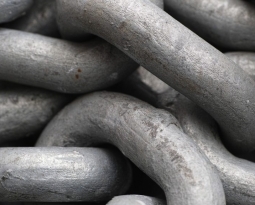New Hampshire Patent of the Month – June 2022
Internal combustion engines and various reciprocating machines use a series of pistons and drive mechanisms to convert linear motion of the piston to rotary motion. Unfortunately, the friction generated by the sliding or a misaligned piston can create loud noises and drastically reduce the life and efficiency of the piston and the engine. New Power Concepts, LLC has created a stirling cycle machine that reduces these side loads while maintaining a small, light, and efficient design.
Their cycle machine is designed to operate with a liquid or gas fuel burner. The burner has a preheater set to capture the thermal energy of the exhaust, directing the preheated air through each burner head into a prechamber. This prechamber connects to the combustion chamber. The burner head ignites the fuel air mixture and an increased flow rate forces the diffusion flame into the combustion chamber.
This design is achieved using a rocking beam drive mechanism where a piston and chamber are housed. The piston operates linearly and this motion converts to the rotary motion of the rocking beam. This rotary motion then turns the crankshaft.
New Power Concepts has overcome the side load pressure seen in traditional piston-based cycling machines by addressing the angular deviation within their rocking beam. In most standard designs, the piston creates side load on the chamber as a result of the pressure from an angularly deviated link rod. New Power Concepts’ design includes a coupling that minimizes this pressure, maintaining a more linear motion and reducing the chance of side loads on the piston.
These modifications have proven to reduce side load and ultimately reduce wear and tear on the pistons. The industry has typically addressed side load by bulking up the drive mechanisms which results in heavier and bulkier engines. Avoiding the side load with these couplings allows for engines to remain lightweight and more compact, expanding their range of applications.
Are you developing new technology for an existing application? Did you know your development work could be eligible for the R&D Tax Credit and you can receive up to 14% back on your expenses? Even if your development isn’t successful your work may still qualify for R&D credits (i.e. you don’t need to have a patent to qualify). To find out more, please contact a Swanson Reed R&D Specialist today or check out our free online eligibility test.
Who We Are:
Swanson Reed is one of the U.S.’ largest Specialist R&D tax advisory firms. We manage all facets of the R&D tax credit program, from claim preparation and audit compliance to claim disputes.
Swanson Reed regularly hosts free webinars and provides free IRS CE and CPE credits for CPAs. For more information please visit us at www.swansonreed.com/webinars or contact your usual Swanson Reed representative.

















